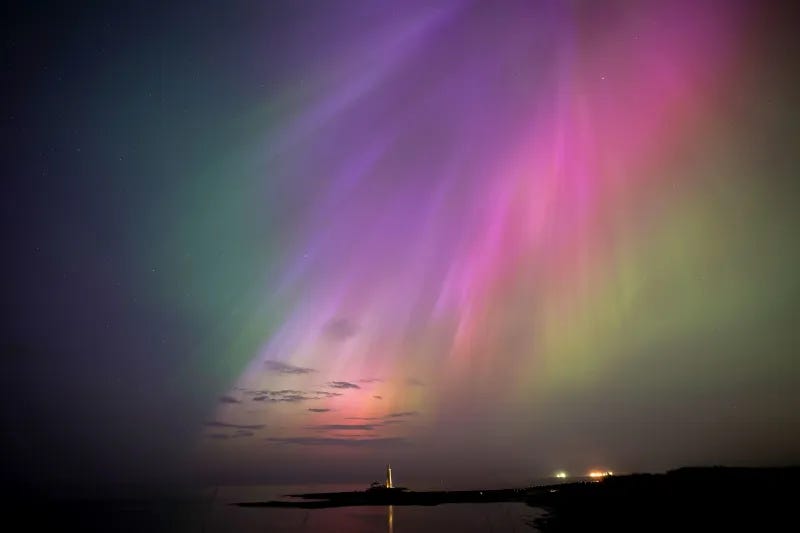Unveiling the Solar Fury: the G5 Geomagnetic Storm
Understanding the furious outrage: Earth's Encounter with a G5 Geomagnetic Storm.
The Spectacular Northern Lights: A Silver Lining
On a seemingly ordinary night, the skies across the Northern Hemisphere, especially in the higher latitudes, were painted with vibrant hues of green and purple, courtesy of the aurora borealis. This visual spectacle, commonly known as the Northern Lights, was particularly extraordinary due to an extreme G5 geomagnetic storm that reached Earth last night. Such events, while stunning, hint at the turbulent interactions between Earth's magnetic field and solar emissions.
The Science Behind the Storm
A geomagnetic storm is essentially a disturbance in Earth's magnetosphere, caused by a very efficient exchange of energy from the solar wind into the space environment surrounding Earth. This process often follows solar flares and coronal mass ejections (CMEs) from the sun, which emit bursts of plasma and magnetic field lines into space. According to the National Oceanic and Atmospheric Administration (NOAA), this week's activity has been linked to a particularly large sunspot cluster, 17 times the diameter of Earth, which has been an active source of solar flares.

The Potential Hazards
While the auroras are a mesmerizing effect of geomagnetic storms, the consequences can extend beyond mere light shows. G5 storms, the highest category on the geomagnetic storm scale, have the potential to disrupt telecommunications and power grids. The storm's magnetic fluctuations can induce electric currents in transformers and power lines, increasing the risk of power outages and damage to infrastructure. Additionally, satellites and GPS services may face significant disturbances, complicating navigation and communication across the globe.
Starlink's Resilience Amidst Solar Storm Turbulence
Elon Musk tweeted a short while ago about the current solar activity, stating: "Major geomagnetic solar storm happening right now. Biggest in a long time. Starlink satellites are under a lot of pressure, but holding up so far." This update highlights the resilience of the Starlink satellite system amidst one of the most significant geomagnetic storms in recent history. Starlink, a satellite internet constellation operated by SpaceX, is designed to provide high-speed internet access across remote and underserved areas of the planet. These satellites orbit at lower altitudes compared to traditional communications satellites, which helps in reducing latency but also exposes them to increased solar activity. This scenario is better illustrated by the graphic below, which visually captures the intensity of the geomagnetic storm and its impact on the satellite constellation.
Precautions and Protections
In response to the storm, NOAA has issued alerts to operators of power plants and spacecraft, urging them to take precautions against potential disruptions. While most residential electrical systems are not directly threatened by such storms, the broader impacts on high-voltage transmission networks could lead to cascading effects on power supply and grid stability.
The Bigger Picture: Solar Cycle Insights
This storm is part of the larger pattern of solar activity, which follows an 11-year cycle. Currently in the rising phase of Solar Cycle 25, which began in December 2019, such geomagnetic events are expected to become more frequent as the sun moves toward solar maximum. This cycle of high and low solar activity influences various aspects of space weather, which, in turn, affects Earth's environment.
Summing Up: A Glimpse into Cosmic Forces
The recent G5 geomagnetic storm serves as a powerful reminder of Earth's vulnerability to the vast forces of space. While providing spectacular visual phenomena like the Northern Lights, these storms also challenge our modern technological infrastructure. As we continue to study these celestial events, it becomes increasingly important to develop robust systems capable of withstanding the whims of solar activity. Observing and understanding these forces not only satiates human curiosity but ensures our readiness for future solar outbursts. As we marvel at the night sky, let us not forget the delicate balance between beauty and chaos in our interconnected universe.






